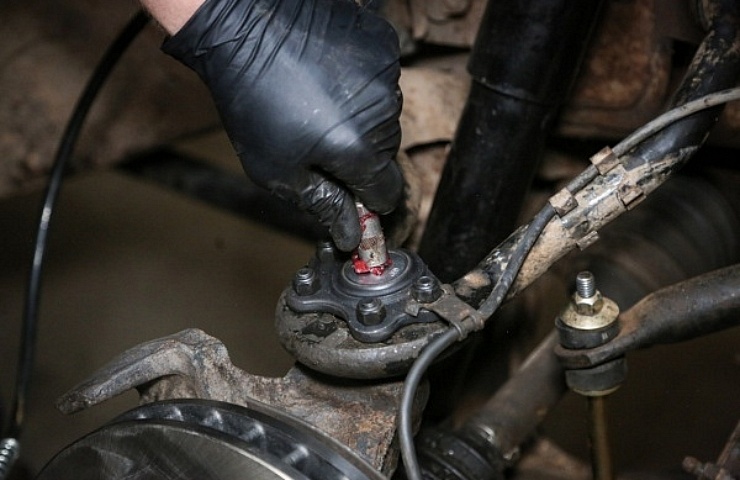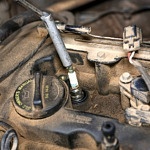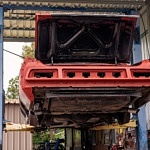Contents
What Is a Lube Job and Why Do You Need One?
A lube job is the process of adding fresh grease to the consumable joints in your vehicle’s undercarriage, provided they have grease fittings. This includes but is not limited to the ball joints, suspension bushings, tie rods, and U-joints.

These types of grease are suitable for chassis lube. The Marine grease is for boats, trailers, and off-road vehicles that are in water.
Grease has a limited life in your vehicle. As grease warms up through use, it wears out and needs to be replenished. Tie rods and ball joints can last 100,000 miles or more, provided they are greased periodically. A joint that is beginning to wear can be kept in service a little longer with fresh grease, and new joints can be kept in top shape for much longer. Failure to service your consumable joints and bushings might result in premature failure.
Shop now for greaseDo All Vehicles Need Lube Jobs?
The need for a lube job depends on the year, make, and model of the vehicle, as well as whether any service parts were replaced. In the mid-1990s, some automakers started using non-serviceable suspension joints. These types of joints and bushings do not have grease fittings because they are fully sealed. Manufacturers made this change because many car owners were skipping regular greasing, which caused their serviceable joints to fail prematurely.

These greases are for wheel bearings and other high-pressure or high-heat applications.
Sealed joints last longer than a serviceable joint that never gets greased. But they don’t last as long as a regularly serviced greaseable joint. Many new vehicles still use serviceable joints, and most aftermarket replacements are greaseable.
Cost Savings vs. Shop Visits
Don’t assume your oil change includes chassis greasing. Many auto shops use the term “lube job” to describe a fundamental oil change, but this doesn’t always mean they’re greasing your suspension joints. Some shops include chassis lubrication with oil changes, while others charge $40 to $80 for it as a separate service. Always ask what’s included.

Most DIYers use a manually operated grease gun. Power grease guns work much faster if you have to service many vehicles.
The DIY option saves money. You can easily do this yourself with a grease gun and the proper grease, both of which are available for under $30. This initial investment will cover several years’ worth of lube jobs, making it much cheaper than paying a shop each time.
Do You Need Special Grease?
Yes. Not all greases are compatible, so it is essential to use the correct grease for your vehicle. Most vehicles use a multi-purpose grease for basic chassis components. Molybdenum (Moly) is a high-stress additive that benefits any chassis lubrication. You shouldn’t use basic multi-purpose grease on high-pressure or high-heat applications, such as wheel bearings. It will fail immediately.

NLGI codes are the key to identifying grease applications. GC-LB means this is an all-purpose high-pressure grease.
All grease has a National Lubricating Grease Institute (NLGI) code. Numbers in the code correspond to the grease’s thickness. #2 is most commonly used for automotive applications. The letters describe the function:
- MP: Multi-purpose
- EP: Extreme pressure
- GP: General purpose
- GC: Wheel bearing
- LB: Chassis lube
- GC-LB: Wheel and chassis
Pro Tip: Some makes, such as Ford, require Ford-spec wheel bearing grease with specific levels and ingredient grades. Grease labeled “multi-vehicle” (gray color) meets the requirements for Ford (blue color) and GM/Chrysler (red color) grease. This is for wheel bearings only. Chassis lube is not make specific.
Shop now for greaseWhat Needs Grease On Your Car’s Chassis?
Some vehicles have unique greaseable items. But the main service items for most vehicles include:
- Ball joints
- Control arm bushings
- Leaf spring bushings (Not between the leaves. Use graphite mixed in alcohol instead.)
- Pitman/idler arm
- Steering joints
- Sway bar links
- Tie rod ends
- U-joints (driveshaft/half shaft)
Add any other items with a grease fitting to this list. A grease fitting, otherwise known as a zerk, looks like a small hex bolt with a round nipple that has a tiny hole in the center. The nipple may be vertical or offset at 45 or 90 degrees. It looks nearly identical to a brake bleed fitting.

Grease zerks look like a small bolt with a nipple. They may be straight or angled, depending on the placement.
If the fitting is on the brake caliper or wheel cylinder, it is not a grease fitting. Grease zerks do not require opening or unthreading. A spring-loaded check ball accepts the grease and closes automatically.
If a joint or bushing does not have a grease zerk, it is not serviceable. While there are grease needles for these, you run the risk of damaging the boot. If the joint is getting loose and the boot is still sealed but loose, you can use the smallest grease needle, insert it at an angle into the boot, and fill it. This is a temporary measure, as the joint is likely on its way out and will need replacing soon.
How to Add Grease to a Joint
Follow the gun’s instructions to load it with grease. Attach the locking tip to the zerk and hold it firmly in place. Some grease fittings fit tighter than others.

This new tie rod needs grease. The boot is flat, a sign it is empty.
Pump the gun to inject grease. If the grease pumps out from the fitting, your tip is too large or is not fully engaged. Some grease guns come with different tip sizes, and others have a universal tip. Most vehicles have quarter-inch zerks, but some use eighth-inch fittings.
Fill the joint with grease until the boot begins to inflate slightly. Don’t fill the joint to the point that the boot is fully expanded. This will limit the boot’s ability to move and can cause it to pop off or tear.
Disconnect the tip and wipe the excess grease off the fitting.
How Often Should I Lube My Chassis?
Most experts agree that the optimal interval for chassis lubrication is every 3,000 to 4,000 miles, which is based on the oil change interval. We recommend lubing the chassis joints with every oil change to maximize the life of your suspension consumables.

The gun attaches to the grease fitting and fills the boot. You can see the double-flare of the boot, but it is starting to puff up. This boot is now full.
Lubricating your chassis can save you time and money, not only in servicing but also in long-term maintenance costs. Whether you do it yourself or have it done, your serviceable joints must be adequately lubricated to maximize their lifespan.





